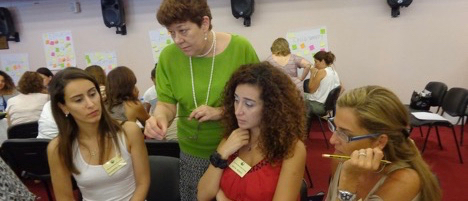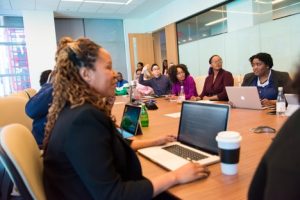
As 2017 begins, preparation is on my mind. My husband and I are expecting our first child, and we’re thinking about the preparations required for the new baby. Some days, we feel dizzy when we consider the areas where we need more training and education to feel truly prepared to welcome and care for this new family member.
Significant preparation is also required for meaningful community engagement. I’ve written before about the importance of going beyond asking residents for their feedback and input, and instead shifting the power balance and engaging community as equal partners and experts in work that affects them. In my work with MDC, I am working together with other colleagues to review best practice on parent leadership programs–programs that prepare parents to be strong advocates for themselves, their children, and their communities. We have identified strong programs: Parent and Family Advocacy Support Training (PFAST) and Parent As Leaders Academy (PAL) are offered here in Durham by the Strengthening Families Coalition and are focused on school-based advocacy, and Abriendo Puertas/Opening Doors (APOD) is a national popular education model that cultivates advocacy and leadership with Latino families.
A conversation right before the holidays reminded me that the research my colleagues and I are doing is only addressing one piece of the work necessary to create spaces where residents and local government agencies and nonprofits can share power and make decisions together.  Parent leadership programs, while important, only cover part of the preparation needed for parent leadership to be an effective tool for progress. As parents may not be fully prepared to be strong leaders and advocates, local government agencies, school systems, and nonprofit boards and staff often lack sufficient skills to incorporate parent leaders into their work and decision-making processes.
Parent leadership programs, while important, only cover part of the preparation needed for parent leadership to be an effective tool for progress. As parents may not be fully prepared to be strong leaders and advocates, local government agencies, school systems, and nonprofit boards and staff often lack sufficient skills to incorporate parent leaders into their work and decision-making processes.
While not discussed as frequently, we must consider what type of preparation is necessary for the members of institutions who want to fully engage families and community members. Structural factors, such as meeting times, availability of meals and childcare, interpretation and transition services, are important to consider, but the work of fostering accessible, welcoming, equitable environments that support genuine engagement goes further. It seems that trainings would be just as valuable in preparing institutions for this new way of working with families and community members.
 A quick web search reveals some tools and resource that institutions can use to evaluate their current practice, including this article from Bridgespan about building a diverse board, and this self-assessment on community engagement from the National Association for the Education of Young Children (NAEYC).
A quick web search reveals some tools and resource that institutions can use to evaluate their current practice, including this article from Bridgespan about building a diverse board, and this self-assessment on community engagement from the National Association for the Education of Young Children (NAEYC).
However, there seem to be less readily available resources around training for institutions about creating equitable, engaged decision-making processes that emphasize family and community voice and leadership.
If we want to move in the direction of more equitable planning and decision making, we should consider shifting the conversation about preparation to emphasize dual capacity-building–the preparation of all involved, not just community members.
Cate,
I think this is a great insight. My experience with working with local school officials around deliberative dialogue taught me that many administrators are anxious about/suspicious of public engagement activities that they don’t tightly control and where the outcome isn’t predetermined. Our group had to do a lot of work on that side of the aisle, training and explaining the dialogue process. I wonder if our friends at the Institute of Government have ideas for how to do this work with institutional actors.
Katy
Cate – I agree with your main point: it is a “two-way street” in terms of preparation and fit between parent leadership and community organizations, government and others being ready for that leadership.
I seek your deeper thinking on the “institutions… creating equitable, engaged decision-making processes that emphasize family and community voice and leadership.” Is money part of the problem? Not “how much?” but the rules – coming from federal and state government, in many cases – which limits how much control community groups and government can “give up” to true parental leadership and choice?
Another important dimension: what do you mean by equitable? I assume it is not strictly a 50/50 sense of collaboration where parent and funder/agency have an equal say. This could be a formula for gridlock – a simple one side says “yes” and the other “no” and nothing happens. But what does “equitable” mean in terms of the parent leadership programs?
Thanks, John